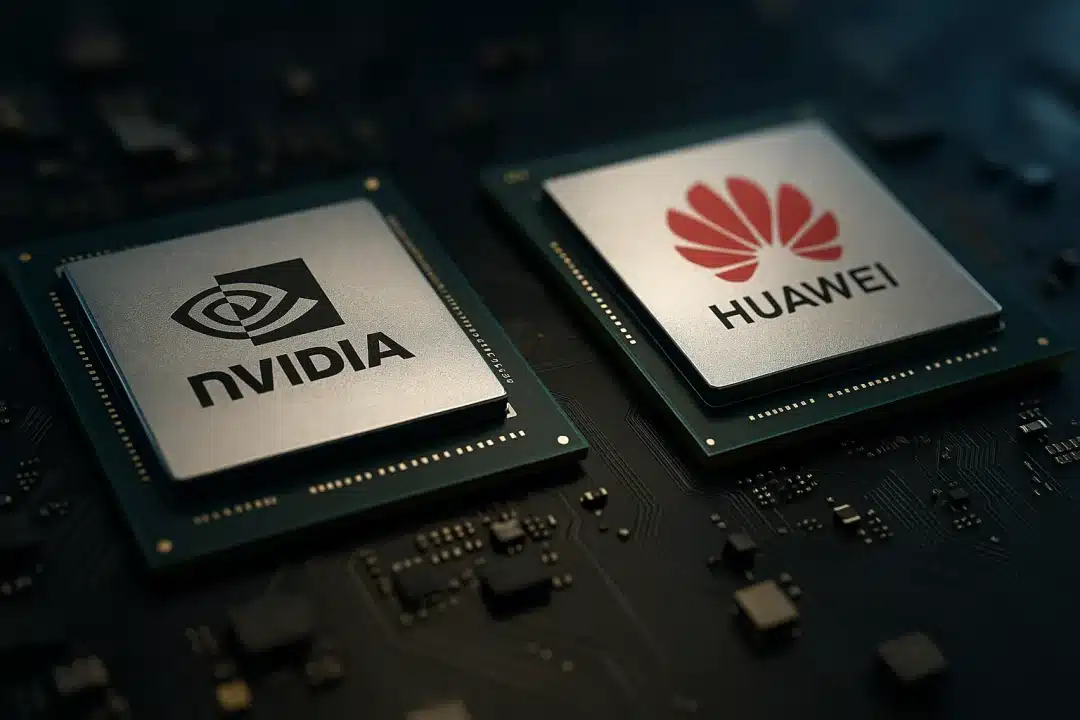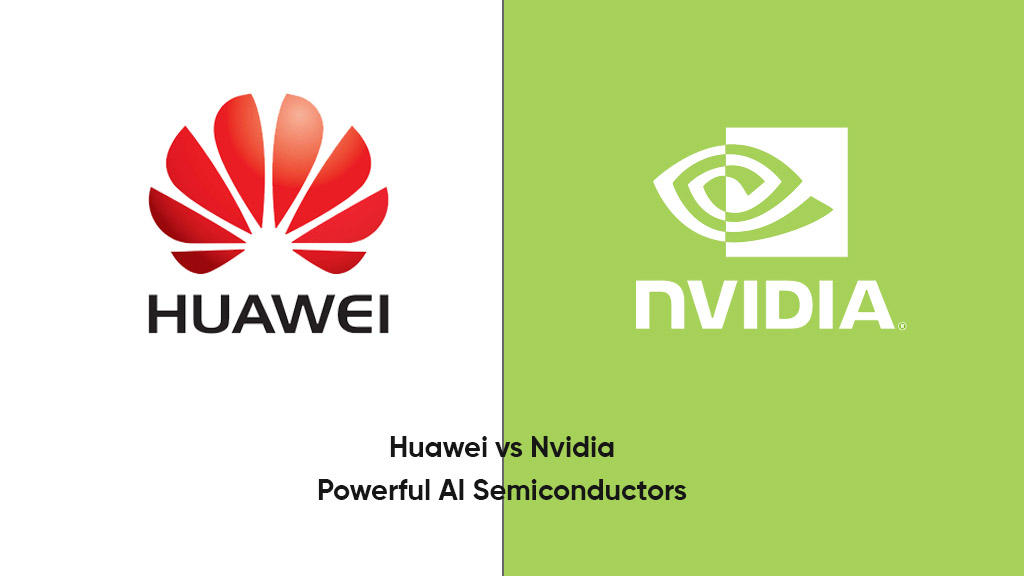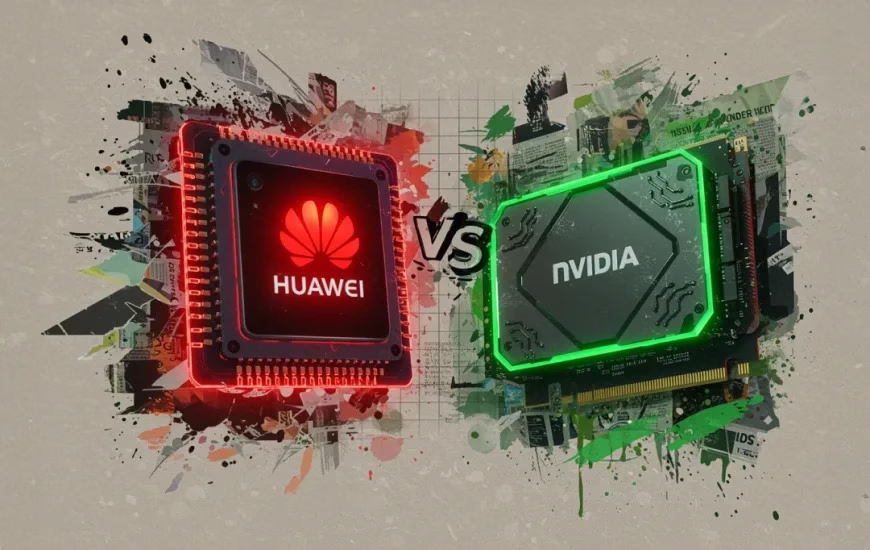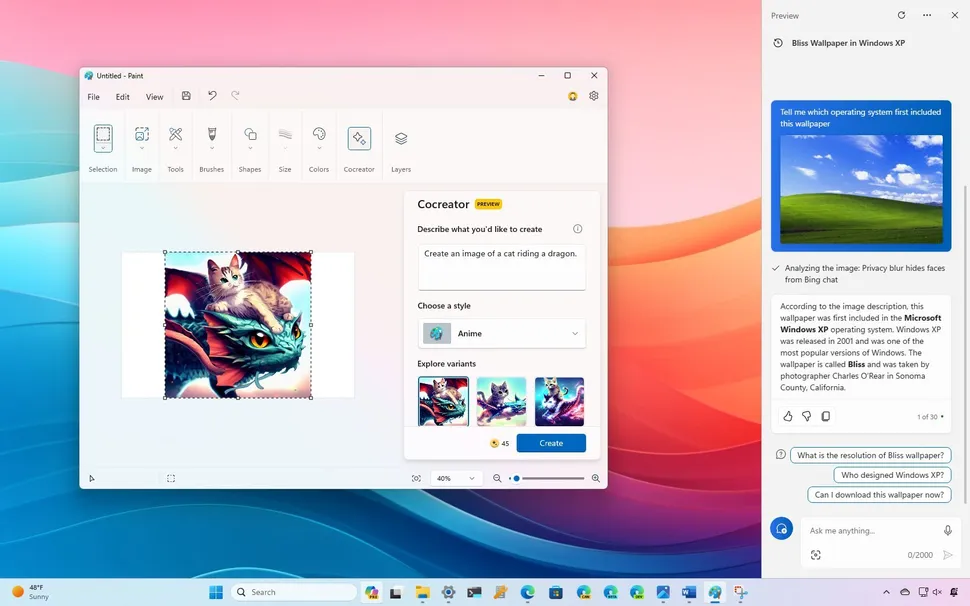Huawei AI Computing System vs Nvidia: The Global AI Chip Showdown
Estimated reading time: 8 minutes
Key Takeaways
- The escalating global demand for AI computing power is driving an intense rivalry between long-standing leader Nvidia and emerging powerhouse Huawei.
- Huawei is executing a strategic offensive, developing advanced Ascend processors and the Atlas series hardware, alongside its CANN software stack, to challenge Nvidia’s dominance.
- Huawei’s CloudMatrix 384 system, featuring 384 Ascend 910C chips, showcases significant performance, reportedly outperforming Nvidia’s GB200 NVL72 in select AI benchmarks.
- Nvidia maintains its global lead through its mature CUDA software ecosystem, extensive developer community, and strategic development of China-specific chips.
- China’s national priority for AI chip independence provides Huawei with a protected domestic market and robust support, though export controls remain a challenge.
- The rivalry is bifurcating the global AI market, accelerating innovation and potentially driving down costs, while also raising concerns about a fragmented tech ecosystem.
- The future of the AI chip race promises continued intense competition, shaping AI research, infrastructure, and global commerce, compelling both players to innovate relentlessly.
Table of Contents
- Huawei AI Computing System vs Nvidia: The Global AI Chip Showdown
- Key Takeaways
- Introduction: The AI Computing Arena – Huawei vs. Nvidia Showdown
- Huawei’s Strategic Offensive: Laying Down the AI Gauntlet
- Deep Dive: CloudMatrix 384 Performance Against Nvidia
- Nvidia’s Reign and Resilience: The Incumbent’s Arsenal
- The Broader Landscape: Chinese AI Chip Development Huawei Spearheads
- Global Implications: Impact of Huawei AI on the Global Market
- Strengths & Weaknesses: A Balanced Perspective
- The Future Outlook: What Lies Ahead in the AI Chip Race
- Conclusion: Redefining the AI Computing Frontier
- Frequently Asked Questions
Introduction: The AI Computing Arena – Huawei vs. Nvidia Showdown
The digital age is increasingly defined by its hunger for Artificial Intelligence (AI) computing power. From sophisticated language models to advanced scientific simulations, the global demand for processing prowess has surged. For years, the conversation around this critical infrastructure has been dominated by one name: Nvidia. With its revolutionary GPU architecture and an unparalleled software ecosystem, Nvidia has firmly established itself as the undisputed industry leader in AI computing.
However, the technological landscape is rarely static, and a transformative shift is undeniably underway. A powerful challenger has emerged from the East, signaling a significant realignment in the global technology power balance. This blog post aims to provide an in-depth comparison of the Huawei AI computing system vs Nvidia, highlighting how Huawei’s emergence is directly impacting the established order in the global AI and semiconductor arenas. The stakes are incredibly high, as Huawei mounts a significant challenge, forcing a re-evaluation of market dynamics and future innovation trajectories.
We will delve into the strategic moves, technological advancements, and geopolitical forces shaping this intense rivalry. Understanding Huawei’s challenge to Nvidia AI chips is not merely about market share; it’s about recognizing a pivotal moment that will redefine the future of AI development and accessibility worldwide. Join us as we explore the complexities of this crucial competition.

Huawei’s Strategic Offensive: Laying Down the AI Gauntlet
Huawei’s journey in the AI computing space has been one of remarkable resilience and strategic determination. Despite formidable challenges, particularly the severe setbacks stemming from U.S. sanctions that restricted its access to critical technologies, the company has openly committed to long-term AI advancement. This unwavering perseverance underscores a clear long-term vision: to become a self-sufficient and globally competitive force in AI.
At the heart of Huawei’s ambitious AI push are its core hardware components. The company has invested heavily in the development of its own proprietary chip architecture, most notably the Ascend processors. This family of AI chips includes the formidable 910B and 910C models, designed for intensive training and inference, with the highly anticipated 910D model promising to further push performance boundaries. Complementing these powerful processors is the Atlas series server hardware, which integrates Ascend chips into scalable, high-performance computing clusters tailored for diverse AI applications.

Huawei’s strategy extends far beyond mere hardware. Recognizing that a robust AI ecosystem requires comprehensive software support, the company is meticulously building an alternative to dominant Western platforms. A cornerstone of this effort is its CANN software stack (Compute Architecture for Neural Networks), which serves as Huawei’s direct rival to Nvidia’s ubiquitous CUDA. CANN aims to provide developers with a powerful and flexible framework for AI application development. Furthermore, Huawei is actively fostering adoption by open-sourcing its “Pangu” AI models. This strategic move encourages wider uptake of its technology, particularly in critical sectors like industry and logistics, thereby solidifying its ecosystem.
This multifaceted strategic offensive clearly positions Huawei’s efforts as a direct and formidable Huawei’s challenge to Nvidia AI chips. It’s a comprehensive approach that integrates hardware innovation with a burgeoning software ecosystem, all aimed at reshaping the competitive landscape and securing a significant share in the global AI computing market. The battle between the Huawei AI computing system vs Nvidia is heating up, defining new benchmarks for innovation and market leadership.
Deep Dive: CloudMatrix 384 Performance Against Nvidia
In its ongoing bid to assert dominance, Huawei has unveiled its flagship system, the CloudMatrix 384. This impressive system is a testament to China’s rapid advancements in domestic AI infrastructure, linking a staggering 384 Ascend 910C chips to form what is recognized as China’s most advanced AI cluster. Its very existence marks a significant step towards self-sufficiency in high-performance AI computing.
The CloudMatrix 384 is fundamentally based on the Ascend 910C architecture, meticulously optimized for multi-modal AI workloads. While detailed specifications often remain proprietary, public sources highlight key features such as exceptionally high interconnect bandwidth between chips and substantial on-board memory, vital for achieving high throughput and low latency in AI computations.

The most compelling aspect of the CloudMatrix 384 performance against Nvidia comes from direct comparisons. According to available benchmarks, the CloudMatrix 384 reportedly outperforms Nvidia’s GB200 NVL72 in select benchmarks, particularly in demanding large-scale AI training and complex inference tasks. Furthermore, Huawei is not resting on its laurels. The upcoming 910D chip, poised to follow the 910C, is anticipated to present an even greater challenge to Nvidia’s flagship H100 cluster, not just in terms of raw performance but also in crucial aspects like energy efficiency.
In terms of strengths, Huawei’s hardware certainly showcases impressive capabilities. Its designs excel in parallel computation and power consumption, making them highly effective for concurrent processing in neural networks. However, the company faces ongoing challenges, primarily related to its global ecosystem. Compared to Nvidia’s decades-long cultivation of a vast developer community, Huawei’s ecosystem is still nascent on the international stage. The richness and maturity of its software stack, while rapidly improving, still present a hurdle when compared to Nvidia’s highly mature and deeply integrated CUDA platform.
Important Caveats and Limitations: It is crucial to acknowledge that benchmark data cited for Huawei’s CloudMatrix 384 against Nvidia GB200 NVL72 is primarily based on independent but not widely peer-reviewed sources. This means that while promising, these results may lack the rigorous, multi-party verification often seen in international industry benchmarks. Additionally, detailed technical disclosures by Huawei often lack the transparency seen from Nvidia’s international-facing documentation, making direct, comprehensive technical comparisons challenging. Despite these caveats, the evident capabilities of the Huawei AI computing system vs Nvidia’s offerings underscore a vibrant and increasingly competitive landscape.
Nvidia’s Reign and Resilience: The Incumbent’s Arsenal
Despite the formidable ascent of Huawei and other competitors, Nvidia unequivocally retains its global leadership in the AI chip market. Its dominance is deeply rooted in its pioneering work in GPU-based acceleration for AI. The company’s arsenal is spearheaded by its industry-standard GPU-based AI chips, including the widely adopted H100 and A100 platforms, which power a vast majority of the world’s most advanced AI research and deployments. Looking ahead, the anticipation around its upcoming Blackwell-based models further solidifies its position as an innovation engine. The persistent demand for high-performance AI chips continues to fuel Nvidia’s growth.

Nvidia’s key advantages are multifaceted and deeply entrenched. Paramount among these is its vast, mature CUDA software ecosystem. CUDA, Nvidia’s parallel computing platform, has been instrumental in democratizing GPU computing for developers, making it the de facto standard for AI development. This has cultivated a global, established developer community that is both loyal and immensely productive, creating a powerful network effect that is incredibly difficult for competitors to replicate. Furthermore, Nvidia boasts a strong market presence across critical sectors, including large-scale cloud computing environments, enterprise AI solutions, and academic research institutions, making its hardware and software pervasive in the global AI landscape.
In response to evolving market dynamics, particularly in the face of export restrictions and burgeoning domestic competition in China, Nvidia has demonstrated strategic adaptability. The company has made a decisive move to develop China-specific chips, such as a stripped-down RTX Pro 6000D. This approach is designed to both comply with stringent export regulations and to directly address the increasing price pressures from Huawei-based alternatives within the crucial Chinese market. By offering tailored solutions, Nvidia aims to maintain its foothold in this vital region, even as it navigates the complex geopolitical landscape. The ongoing battle between the Huawei AI computing system vs Nvidia continues to shape these strategic maneuvers, showcasing Nvidia’s resilience and determination to remain at the forefront of AI innovation globally.
The Broader Landscape: Chinese AI Chip Development Huawei Spearheads
The rise of Huawei in the AI chip sector is intrinsically linked to a broader national ambition: China’s aggressive drive for AI chip independence. This is no longer merely an economic goal but a critical national priority, fueled by geopolitical tensions and the strategic imperative to reduce reliance on foreign technology. This overarching objective has spurred massive domestic investment across the semiconductor value chain, robust government support, and the deliberate cultivation of a vibrant domestic ecosystem of chip designers, manufacturers, and software developers.
Within this dynamic environment, Huawei stands to significantly benefit from this national push. The company enjoys the immense advantage of a protected domestic market, where government contracts and state-sponsored projects increasingly prioritize indigenous solutions. This domestic insulation provides a crucial testing ground and a guaranteed customer base. Furthermore, the burgeoning domestic supply chain within China provides Huawei with increasing access to components and manufacturing capabilities, partially mitigating the impact of international sanctions. The increasing adoption of its Huawei AI computing system in state-sponsored projects further solidifies its market position.

However, the path to full independence for Chinese AI chip development Huawei spearheads is not without significant hurdles. Export controls, particularly those imposed by the United States, continue to impede Huawei’s access to leading-edge manufacturing technologies, especially advanced lithography equipment. This reliance on less advanced processes can put Huawei at a performance disadvantage in some high-end applications. Moreover, international trust hurdles remain a significant obstacle for global expansion. Concerns about data security and geopolitical alignment mean that many Western markets are hesitant to fully embrace Huawei’s technology, limiting its ability to compete globally despite its impressive technological strides within its domestic market.
Global Implications: Impact of Huawei AI on the Global Market
The ascent of Huawei in the AI chip arena has profound implications for global market dynamics, most notably posing a direct threat to Nvidia’s substantial revenues derived from the lucrative Chinese market. As Huawei’s domestic solutions become more competitive and preferred, Nvidia’s traditional stronghold in China faces increasing erosion. This intensifying rivalry is fundamentally forcing a bifurcated global market, where China-focused AI solutions are increasingly diverging from international standards and technologies.
While Huawei already claims a dominant market position within China, its global reach continues to be significantly limited by ongoing U.S. sanctions. These restrictions severely curtail its ability to expand into many Western markets, forcing the company to seek growth elsewhere. Consequently, select emerging markets—particularly those in regions like the Middle East—are increasingly partnering with Huawei. These partnerships are often driven by a combination of favorable trade terms, accessible technology, and shared national AI ambitions, providing Huawei with vital avenues for international expansion despite the Western blockade.

The broader impact of Huawei AI on global market dynamics extends beyond just market share and geopolitical divides. Paradoxically, this intense rivalry is accelerating global AI innovation. The fierce competition compels both Nvidia and Huawei to invest more aggressively in research and development, pushing the boundaries of chip design and software optimization. This accelerated innovation has the potential to drive down costs across the industry due to increased competitive pressure, making advanced AI computing more accessible. However, this competitive dynamic also carries a significant risk: the potential for creating a fragmented tech ecosystem worldwide. If different regions adopt distinct AI hardware and software standards, it could hinder collaborative international AI research and deployment. The outcome of the Huawei AI computing system vs Nvidia showdown will undoubtedly define the structure and direction of the global AI industry for years to come.
Strengths & Weaknesses: A Balanced Perspective
To fully grasp the dynamics of the Huawei AI computing system vs Nvidia showdown, it’s essential to provide a balanced comparison of their respective strengths and weaknesses in the fiercely competitive AI chip market.
:max_bytes(150000):strip_icc()/HuaweiandNvidia-3022b0e6df904655a02a23ad3ee59494.jpg)
Huawei’s Strengths:
- Innovation in hardware design: Huawei’s Ascend processors demonstrate significant engineering prowess, offering competitive performance and focusing on energy efficiency.
- Strong vertical integration: Controlling aspects of both hardware design and software development (e.g., CANN) enables tighter optimization and faster iteration cycles.
- Significant domestic market capture in China: Backed by national policy and a preference for indigenous solutions, Huawei dominates the rapidly growing Chinese AI market, providing a stable revenue base and invaluable real-world deployment experience.
- Rapidly improving software ecosystem: The development of the CANN software stack and the open-sourcing of Pangu AI models are quickly building a viable alternative to CUDA within its sphere of influence.
Huawei’s Weaknesses:
- Limited global ecosystem and fewer international partners
: Compared to Nvidia’s sprawling network, Huawei’s global presence for AI is restricted, hindering widespread adoption outside China.
- Significant geopolitical constraints and ongoing export restrictions: U.S. sanctions continue to impede Huawei’s access to the most advanced manufacturing processes and critical foreign components, potentially limiting the ultimate performance ceiling of its chips.
Nvidia’s Strengths:
- Highly mature and dominant CUDA ecosystem: CUDA is the industry standard for GPU programming, offering an unparalleled suite of tools, libraries, and frameworks that streamline AI development.
- Vast global developer base and strong community support: Decades of investment have created a massive, highly skilled developer community proficient in Nvidia’s platforms, ensuring a continuous stream of innovation.
- Established brand recognition and market leadership: Nvidia is synonymous with high-performance computing and AI, enjoying significant trust and preference among enterprises, researchers, and cloud providers globally.
- Leadership in high-end performance AI chips: With products like the H100 and the upcoming GB200, Nvidia consistently pushes the boundaries of raw computational power, maintaining a performance edge in the most demanding AI workloads.
Nvidia’s Weaknesses:
- Potential overreliance on its CUDA/GPU architecture: While dominant, this architecture could face challenges from novel AI-specific architectures or alternative computing paradigms.
- Vulnerability to regulatory and market shifts in key regions like China: Export controls significantly impact Nvidia’s ability to sell its most advanced chips in China, forcing it to develop less powerful, compliant alternatives that face intense price and performance competition from domestic players.
This balanced view underscores that while Nvidia currently holds the global lead, Huawei’s aggressive domestic strategy and technological advancements represent a credible and growing threat, compelling both giants to constantly adapt and innovate.
The Future Outlook: What Lies Ahead in the AI Chip Race
The intense rivalry between the Huawei AI computing system vs Nvidia is far from over; indeed, it is poised to become one of the defining contests of the next decade in technology. Predictions suggest that Huawei is well-positioned to consolidate control over the Chinese market, leveraging national support and its growing technological prowess. Beyond China’s borders, Huawei is expected to strategically expand via partnerships in regions that fall beyond the direct reach of U.S. regulatory influence. Concurrently, Nvidia is anticipated to continue innovating rapidly, fueled by its significant R&D investments and an unwavering commitment to maintaining its global leadership position. The broader competitive landscape, including players like AMD, will also intensify.
Several possible scenarios could shape the future of the AI chip market. We might witness a truly split global AI market, characterized by clear bifurcation where distinct technological stacks and supply chains serve different geopolitical blocs. Alternatively, there could be niche collaborations, or a continuation of aggressive head-to-head competition across all fronts. Regardless of the precise path, any of these scenarios are likely to foster faster AI progress and broader access to advanced computing tools. The pressure to innovate and compete will drive down costs, improve efficiency, and accelerate the development of new AI applications, benefiting the global tech community as a whole.

The long-term significance of this rivalry extends far beyond mere market share. It will likely reshape fundamental aspects of the AI industry itself. Its impact will ripple through AI research, infrastructure development, and global commerce. Ultimately, this intense competition compels all players to accelerate their innovation strategies. The imperative is not just to build faster chips but to ensure worldwide accessibility and competitiveness, shaping the next era of global artificial intelligence. This push for innovation also touches upon AI-driven emerging tech innovations and addresses critical AI challenges.
Conclusion: Redefining the AI Computing Frontier
In summary, the comparison between the Huawei AI computing system vs Nvidia reveals a dynamic and rapidly evolving landscape. While Nvidia has long held an unparalleled position as the global leader in AI chips, Huawei has demonstrably emerged as a formidable challenger, showcasing impressive hardware capabilities and aggressively building a comprehensive alternative ecosystem around its Ascend processors and CANN software stack. This rivalry is not just a commercial contest but a strategic battle with far-reaching geopolitical and technological implications.
Huawei’s rise as a true AI chip alternative heralds a more multipolar global tech landscape. It fundamentally challenges Nvidia’s long-standing dominance, particularly within the crucial Chinese market, and in doing so, spurs significant innovation across the entire AI industry. This push is most evident within China, where Huawei benefits from robust national support and a protected domestic environment, fostering a vibrant indigenous AI ecosystem.
The outcome of this intense competition will define not just leadership in hardware and software but also the direction for the next era of global artificial intelligence. As both companies continue to pour resources into R&D and strategic positioning, their innovations will inevitably influence the accessibility, capability, and very nature of AI technologies worldwide.
Frequently Asked Questions
Huawei’s Ascend chips are specialized AI processors (NPUs) designed specifically for AI workloads, often emphasizing energy efficiency. Nvidia’s GPUs (Graphics Processing Units), such as the H100 and GB200, are general-purpose parallel processors that have been highly optimized for AI tasks, leveraging their immense parallel processing capabilities and a mature software ecosystem (CUDA).
Nvidia’s CUDA is a highly mature and widely adopted parallel computing platform with a vast array of tools, libraries, and a large developer community. Huawei’s CANN (Compute Architecture for Neural Networks) is its proprietary software stack designed to rival CUDA within its ecosystem. While rapidly advancing and vertically integrated with Huawei’s hardware, CANN is still building its global developer community and library richness compared to CUDA’s long-standing dominance.
China’s drive for AI chip independence is a national strategic priority aimed at reducing reliance on foreign technology due to geopolitical tensions and export controls. Huawei, as a leading domestic technology giant, is at the forefront of this initiative. It benefits from significant government support, a protected domestic market, and the cultivation of a local supply chain, positioning it as a key player in achieving China’s self-sufficiency goals in AI computing.
There is a strong possibility that Huawei’s rise, coupled with export restrictions, could lead to a bifurcated global AI market. This might result in two distinct ecosystems—one primarily China-centric (leveraging Huawei and other domestic solutions) and another adhering to international standards (predominantly Nvidia-based). While this could foster innovation through competition, it also risks creating compatibility challenges and hindering global collaboration in AI development.
Huawei faces significant challenges, primarily from ongoing U.S. export controls that restrict its access to leading-edge manufacturing technologies and key foreign components. Additionally, its global ecosystem is less mature than Nvidia’s, with fewer international partners and a smaller developer community outside of China. International trust hurdles related to geopolitical concerns also limit its expansion into certain Western markets.






